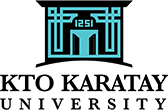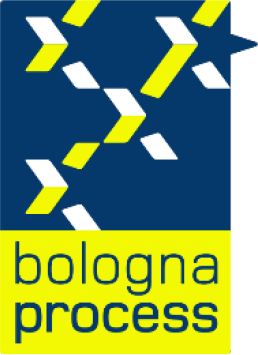Medical Imaging Techniques
Course Details

KTO KARATAY UNIVERSITY
Vocational School of Medical Services
Programme of Medical Imaging Techniques
Course Details
Vocational School of Medical Services
Programme of Medical Imaging Techniques
Course Details

| Course Code | Course Name | Year | Period | Semester | T+A+L | Credit | ECTS |
|---|---|---|---|---|---|---|---|
| 02921006 | Case Study | 1 | Spring | 2 | 2+0+0 | 3 | 3 |
| Course Type | Elective |
| Course Cycle | Associate (Short Cycle) (TQF-HE: Level 5 / QF-EHEA: Short Cycle / EQF-LLL: Level 5) |
| Course Language | Turkish |
| Methods and Techniques | - |
| Mode of Delivery | Face to Face |
| Prerequisites | - |
| Coordinator | - |
| Instructor(s) | - |
| Instructor Assistant(s) | - |
Course Content
Obtaining general radiography, basic evaluation on image data that may be encountered as a result of the use of MR, Tomography, Mammography, Dexa and Ultrasonography devices and distinguishing anatomical structure anomalies
Objectives of the Course
Course Objective The aim of this course is; Fluoroscopy, Mammography, Angiography, MR, US and Computerized Tomography in classroom and hospital environments. imaging techniques, radiation protection and radiation safety while enhancing the experience of problem solving and problem solving in these systems.
Contribution of the Course to Field Teaching
| Basic Vocational Courses | |
| Specialization / Field Courses | |
| Support Courses | X |
| Transferable Skills Courses | |
| Humanities, Communication and Management Skills Courses |
Relationships between Course Learning Outcomes and Program Outcomes
| Relationship Levels | ||||
| Lowest | Low | Medium | High | Highest |
| 1 | 2 | 3 | 4 | 5 |
| # | Program Learning Outcomes | Level |
|---|---|---|
| P2 | Has knowledge of general medical terms, first aid issues related to anatomical and physiological issues related to the field of health, and uses applied knowledge. | 4 |
| P | 3 |
Course Learning Outcomes
| Upon the successful completion of this course, students will be able to: | |||
|---|---|---|---|
| No | Learning Outcomes | Outcome Relationship | Measurement Method ** |
| O1 | Ability to express basic theoretical knowledge about the field of health. | P.2.1 | 1 |
| O2 | Ability to understand the basic principles related to the field of health. | P.2.2 | 1 |
| O3 | Ability to integrate basic theoretical knowledge about health into the field of medical imaging techniques | P.2.3 | 1 |
| O4 | Ability to distinguish the basic elements of theoretical knowledge related to the field of health. | P.2.4 | 1 |
| O5 | Ability to develop strategies in the field of medical imaging techniques by combining basic theoretical and practical knowledge about the field of health. | P.2.5 | 1 |
| O6 | Making suggestions for improvements in the field of medical imaging techniques by using basic theoretical and practical knowledge about the field of health. | P.2.6 | 1 |
| ** Written Exam: 1, Oral Exam: 2, Homework: 3, Lab./Exam: 4, Seminar/Presentation: 5, Term Paper: 6, Application: 7 | |||
Weekly Detailed Course Contents
| Week | Topics |
|---|---|
| 1 | Evaluation of theoretical information about obtaining radiography |
| 2 | Evaluation of theoretical knowledge about obtaining radiography in digital systems |
| 3 | Evaluation of theoretical information about Mobile Radiography Imaging Devices |
| 4 | Evaluation of theoretical knowledge about fluoroscopic imaging |
| 5 | Evaluation of theoretical information about mammography |
| 6 | Evaluation of theoretical information about mammography examination |
| 7 | Midterm exam- Evaluation of theoretical information about computerized tomography |
| 8 | Evaluation of theoretical information about computerized tomography examination |
| 9 | Evaluation of theoretical knowledge about angiography |
| 10 | Evaluation of theoretical knowledge about angiography |
| 11 | Evaluation of theoretical knowledge about Magnetic Resonance Imaging (MRI) |
| 12 | Evaluation of theoretical knowledge about Magnetic Resonance Imaging (MRI) |
| 13 | Evaluation of theoretical information about DEXA and Ultrasonography Imaging Devices |
| 14 | Evaluation of theoretical information about radiation protection |
Textbook or Material
| Resources | Radiation Biology book. Suna Kıraç, Doğangün Yüksel (eds), 2001 |
Evaluation Method and Passing Criteria
| In-Term Studies | Quantity | Percentage |
|---|---|---|
| Attendance | - | - |
| Laboratory | - | - |
| Practice | - | - |
| Field Study | - | - |
| Course Specific Internship (If Any) | - | - |
| Homework | - | - |
| Presentation | - | - |
| Projects | - | - |
| Seminar | - | - |
| Quiz | - | - |
| Listening | - | - |
| Midterms | 1 | 40 (%) |
| Final Exam | 1 | 60 (%) |
| Total | 100 (%) | |
ECTS / Working Load Table
| Quantity | Duration | Total Work Load | |
|---|---|---|---|
| Course Week Number and Time | 14 | 2 | 28 |
| Out-of-Class Study Time (Pre-study, Library, Reinforcement) | 14 | 2 | 28 |
| Midterms | 1 | 14 | 14 |
| Quiz | 0 | 0 | 0 |
| Homework | 0 | 0 | 0 |
| Practice | 0 | 0 | 0 |
| Laboratory | 0 | 0 | 0 |
| Project | 0 | 0 | 0 |
| Workshop | 0 | 0 | 0 |
| Presentation/Seminar Preparation | 0 | 0 | 0 |
| Fieldwork | 0 | 0 | 0 |
| Final Exam | 1 | 20 | 20 |
| Other | 0 | 0 | 0 |
| Total Work Load: | 90 | ||
| Total Work Load / 30 | 3 | ||
| Course ECTS Credits: | 3 | ||
Course - Learning Outcomes Matrix
| Relationship Levels | ||||
| Lowest | Low | Medium | High | Highest |
| 1 | 2 | 3 | 4 | 5 |
| # | Learning Outcomes | P2 |
|---|---|---|
| O1 | Ability to express basic theoretical knowledge about the field of health. | 4 |
| O2 | Ability to understand the basic principles related to the field of health. | 4 |
| O3 | Ability to integrate basic theoretical knowledge about health into the field of medical imaging techniques | 4 |
| O4 | Ability to distinguish the basic elements of theoretical knowledge related to the field of health. | 4 |
| O5 | Ability to develop strategies in the field of medical imaging techniques by combining basic theoretical and practical knowledge about the field of health. | 4 |
| O6 | Making suggestions for improvements in the field of medical imaging techniques by using basic theoretical and practical knowledge about the field of health. | 4 |
